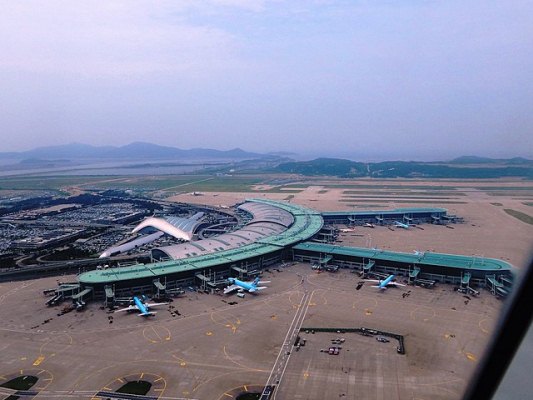-
Overall cargo volumes at the world’s airports declined by 8.9% in 2020, but the top 10 grew their volumes by 3%
-
Memphis was the busiest air cargo hub as its volumes rose 6.7%, dislodging Hong Kong to second place
-
Overall airport passenger traffic decreased by 64.6%
-
The top 10 busiest airports’ passenger traffic fell by 45.7% in 2020
Less impacted by COVID-19 than passenger travel, air cargo at airports worldwide saw only an 8.9% decrease in volume in 2020, with the top 10 airports even seeing a slight uptick, according to new Airports Council International (ACI) World data.
ACI recently published its world airport traffic rankings revealing the dramatic impact of COVID-19 on what are ordinarily the world’s busiest airports in 2020. The report covered passenger traffic, cargo volumes, and aircraft movements.
In terms of air cargo, airports globally saw a volume decline of 8.9% to an estimated 109 million metric tonnes in 2020, equivalent to 2016 levels of 110 million metric tonnes.
But the top 10 airports grew their volumes by 3% in 2020. These airports handled some 30.6 million metric tonnes, representing around 28% of global volumes, as compared to 29.6 million metric tonnes processed in 2019.
The leading airports’ gain can be attributed to the increase in demand for online consumer goods and pharmaceutical products and personal protective equipment.
Memphis International Airport surpassed Hong Kong International Airport as the busiest air cargo hub last year as its freight volumes rose 6.7% over 2019.
It was followed by Hong Kong (-7.1%), Shanghai Pudong International Airport (+1.4%), Ted Stevens Anchorage International Airport (+15%), Louisville International Airport (+4.6%), Incheon International Airport (+2.1%), Taiwan Taoyuan International Airport (+7.4%), Los Angeles International Airport (+6.6%), Doha Hamad International Airport (-1.8%), and Miami International Airport (+2.2%).
Meanwhile, global passenger traffic at the world’s top 10 busiest airports decreased by 45.7% in 2020.
Overall, passenger traffic at the world’s airports decreased by 64.6%, showing that the impact of the pandemic and the early stages of recovery in air travel have not been uniform around the world.
Guangzhou Bai Yun International Airport in China recorded the most passenger traffic in 2020, with Atlanta Hartsfield-Jackson International Airport in the United States just behind.
Seven of the top 10 airports for passenger traffic are in China, with three in the United States. In most cases, domestic air travel is beginning a modest rebound, while international air travel remains depressed because of ongoing travel restrictions.
As an example, ACI said Hongqiao International Airport in China has moved from 46th position in 2019 to ninth in 2020, illustrating the uneven nature of the impact of, and recovery from, the pandemic across the world.
“The impact of the COVID-19 on global passenger traffic pandemic brought aviation to a virtual standstill in 2020 and we continue to face an existential threat,” ACI World director general Luis Felipe de Oliveira said.
“The data published today reveals the challenge airports continue to face and it remains imperative that the industry is supported through direct support and sensible policy decisions from governments to ensure that aviation can endure, rebuild connectivity, and fuel a global economic recovery.”
ACI World estimates there were 58 million global aircraft movements in 2020, representing a drop of 43% from 2019. The top 10 airports represent 7% of global traffic (4.2 million movements) and experienced a drop of 34.3% compared to 2019.
Atlanta Hartsfield-Jackson International Airport surpassed Chicago O’Hare International Airport, after leading in 2019 and 2018.
For airports, revenues are tightly correlated to traffic levels, but a large proportion of their costs remain largely fixed and do not fall at the same level as traffic throughput and revenues during the crisis. Even with reduced operations, the closure of terminals and staff layoffs, this imbalance remains.
“There is no denying the current economic realities—and the financial shortfall they create—that airports face,” de Oliveira said. “Airports are economic generators, bringing socio-economic benefits and jobs to the communities they serve, and governments need to provide the necessary financial alleviation and assistance to suit local circumstances.”
Photo by G B_NZ – Seoul Incheon Airport





